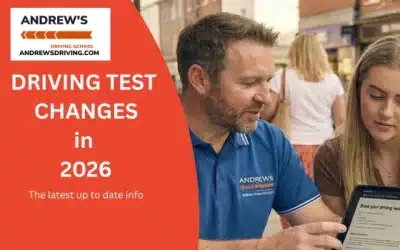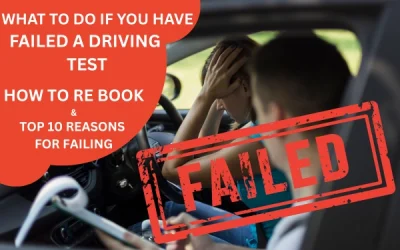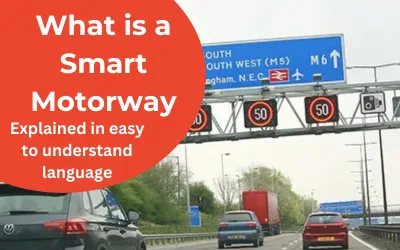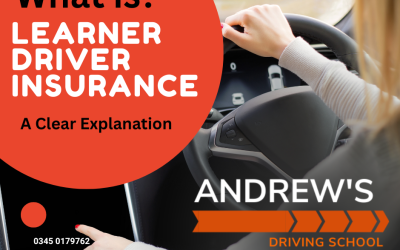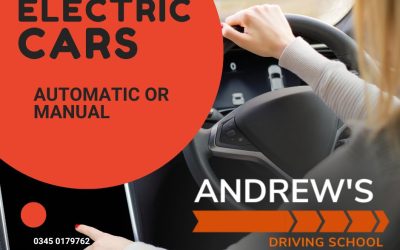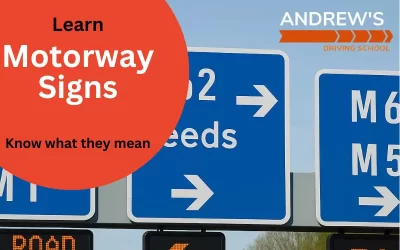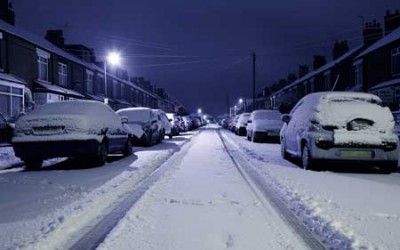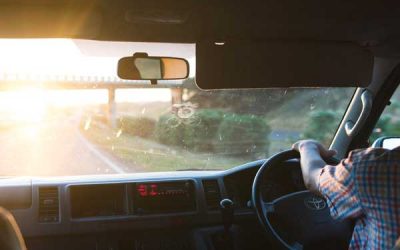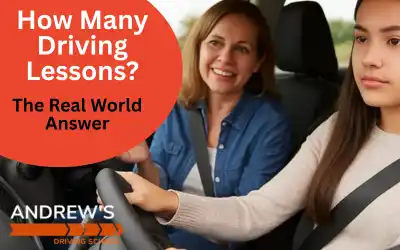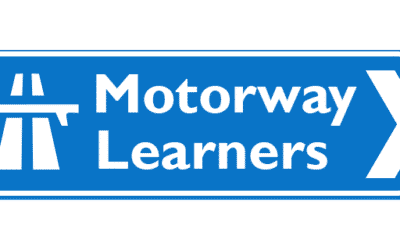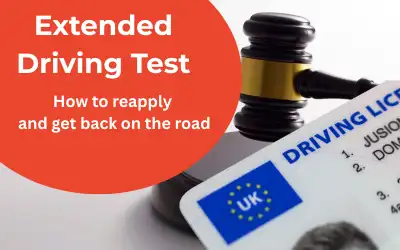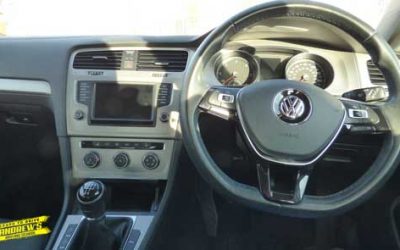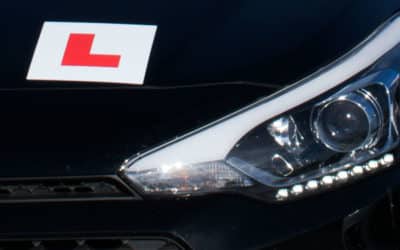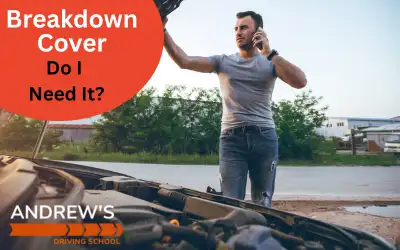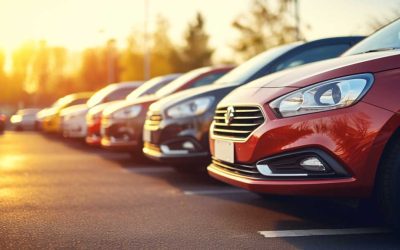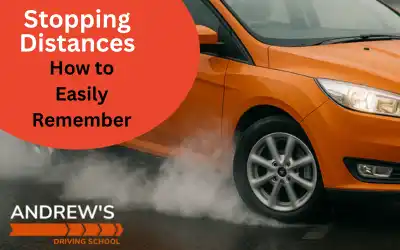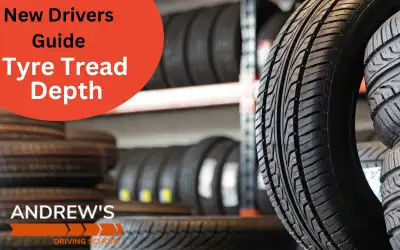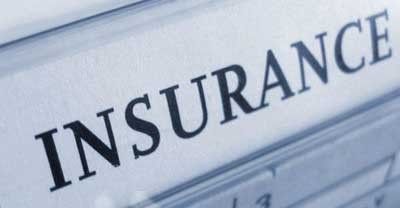First Driving Lesson
What to Expect and How to Prepare
What to Expect on Your First Driving Lesson – Expert Tips from Andrew’s Driving School
Your first driving lesson marks the beginning of your journey to independence — and it’s perfectly normal to feel a little nervous.
At Andrew’s Driving School, and most other reputable driving schools, your first lesson is designed to be safe, calm, and encouraging. You won’t be thrown into busy traffic or expected to drive perfectly — instead, you’ll build confidence step by step, with full guidance from your instructor.
Here’s exactly what happens on a first driving lesson, so you can relax and enjoy the experience.
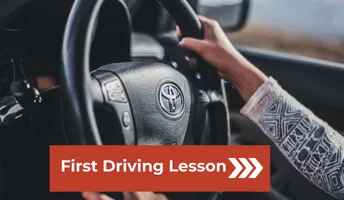
Before Your First Lesson
✔️ Make Sure You’re Legal to Drive
Before your instructor even turns the ignition, you’ll need to meet a few legal requirements:
- Be at least 17 years old (or 16 if you receive the higher rate of the mobility component of Personal Independence Payment)
- Hold a valid UK provisional driving licence (Here’s how to apply for your provisional licence)
- Be able to read a number plate from 20 metres away (wear glasses or contacts if needed)
Bring your provisional licence to your first lesson. Your instructor will need to check it before you get behind the wheel.
🚦 Get Legal: Your VIP Pass to the Driver’s Seat (What to Bring to Your First Driving Lesson)
Think of this as the ultimate pre-game prep before you become a road warrior. Forget the red tape—this is your essential checklist to make sure you’re legally ready for your first driving lesson and the exciting journey ahead!
The Three Must-Haves for Your First Driving Lesson (No Exceptions!)
- You Must Be 17 (Mostly!): The standard age to start driving lessons is 17 years old. However, if you receive the higher rate of the mobility component of Personal Independence Payment (PIP), you can start at 16.
- The Golden Ticket: Your Provisional Licence: This is your official permission slip to learn! Without a valid UK provisional licence, your first lesson can’t happen—it’s the law. If you don’t have it yet, apply for your provisional licence ASAP! (Pro Tip: Your instructor will need to check this on day one, so don’t forget to bring it to your first driving lesson!)
- The Eye Test (The Great Number Plate Challenge): Before you even sit down in the car for your first driving lesson, your instructor will test your vision. You need to be able to read a standard number plate from 20 metres away (that’s about five car lengths). If you wear glasses or contact lenses to see street signs, make sure you wear them to the lesson!
Get these three items sorted, and you’re officially cleared for the best first driving lesson experience. Book your introductory driving session today!
🔑 Your Instructor: Meet Your Co-Pilot!
You don’t need to worry about finding the car—it will find you! Your driving instructor will roll up to your house, school, work, or any other pre-agreed spot in a vehicle that’s impossible to miss: it’s sporting big, bright L-plates and, most importantly, is kitted out with dual controls! That means you’ve got an invisible safety net; your instructor has their own set of pedals and can step in instantly. You are never alone in an emergency.
Easing Into the Driver’s Seat
When they arrive, you won’t jump straight into the deep end! The first few minutes are all about a relaxed chat to help melt away any nerves.
Your instructor knows that busy junctions are not your friend right now, so they’ll start by taking the wheel themselves and driving you to a quieter spot—think an empty industrial estate or a very peaceful residential street. This way, you can focus purely on the basics without the pressure of a rush-hour traffic jam.
Quick Note on “Piggybacking”
Some driving schools use a practice called “piggybacking,” where you might be collected while the previous learner is still in the car, or you’re dropped off while the next pupil is joining. While this can occasionally be useful later on (it helps you get used to driving in front of a stranger), it can be a bit overwhelming on your very first lesson.
The good news? Andrew’s Driving School doesn’t operate that way. Your time is yours, allowing you to settle in and focus completely on the task at hand: getting comfortable behind the wheel!
⚙️ The Cockpit Drill: Your First Mission
Once you’re parked up in a safe, quiet zone, your instructor will give you your very first driving lesson task: mastering the Cockpit Drill! This isn’t just a formality—it’s the essential safety routine every single driver uses to set up the car correctly before moving an inch.
At Andrew’s Driving School, we break it down with the easy-to-remember acronym: DSSSM:
- Doors – Double-check they’re properly shut and secured.
- Seat – Adjust so you can reach the pedals comfortably and have a clear view.
- Steering – Find the proper grip and safe distance from the wheel.
- Seatbelt – Fasten securely. Click!
- Mirrors – Adjust all mirrors (rear-view and side mirrors) for maximum visibility.
Your instructor will patiently guide you through each step. The Cockpit Drill usually takes less than 10 minutes, and once you’re locked, loaded, and adjusted, it’s time for the moment you’ve been waiting for!
🚗 Your First Drive: Clutch, Go, and Glory!
Yes, you will absolutely get behind the wheel during your first driving lesson!
To begin, you’ll focus on the fundamentals:
- Moving off smoothly (clutch control, anyone?).
- Bringing the car to a safe stop.
You’ll repeat this sequence several times until it starts to feel more natural. Many learners are surprised at how quickly their confidence grows! If you get the hang of it early, you might even progress to trying simple left turns and driving a loop around the block.
A Quick Word of Advice
- Don’t worry about pace: If you need more time, take it. Your instructor is there to support you, and every lesson will be tailored to your comfort level and learning speed. Safety always comes first.
- Insist on the drive: We strongly believe that a successful first driving lesson should always include some actual, hands-on experience behind the wheel. If you reach the end of your session without having driven the car, you should consider finding an instructor who will give you that vital practical experience right from the start.
Ready to find the biting point and feel that car move for the first time?
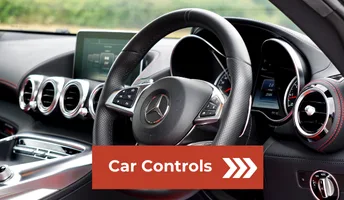
🕹️ Learning the Controls: Your New Power Panel
Welcome to the command centre! Before you start driving, your instructor will walk you through your new ‘toolkit’—all the buttons, levers, and pedals that give you total command of the car. Don’t stress about memorising everything right now; this is just your initial introduction.
The Major Power Controls (The Pedals & Gears)
These are the essentials that make the car go, slow, and stop:
-
Clutch: Found on the left. This foot-operated pedal is your key to switching gears smoothly (if you’re driving a manual).
-
Brake: The middle pedal. Your safety-first control, used to slow the car and bring it to a stop.
-
Accelerator (Gas): On the right. This controls the engine power and your speed.
-
Gear Stick: Used to select your driving mode, from starting in 1st gear to cruising on the road.
-
Handbrake: Your trusty parking assistant—keeps the car stationary when you’re stopped on a hill or parked up.
The Essential Minor Controls (The Gadgets!)
You’ll also learn where all the essential gadgets are located and when to use them:
-
Indicators: For telling the world where you’re going.
-
Headlights: For lighting up the road (and being seen!).
-
Wipers: Your view-clearer in bad weather.
-
Hazard Lights: The emergency signal.
-
Heater & Demister: For a comfy, fog-free cabin.
Remember: Your instructor is there to demonstrate, explain, and repeat as many times as you need! This entire segment of your first driving lesson is all about getting comfortable and understanding the car’s language. Soon, these controls will feel like an extension of yourself!
🚀 Moving Off and Stopping: Launching Your First Drive!
This is it! After the checks and the introductions, the most thrilling moment of your first driving lesson has arrived: getting that car moving and bringing it to a smooth stop.
Your instructor uses a simple routine to make this complex action totally manageable. You’ll be using the POM routine to pull away like a pro:
-
Prepare – Press the clutch pedal all the way down, select 1st gear, and carefully find the biting point. You are now ready for action!
-
Observe – Your mirrors are essential! Check your rear-view and side mirrors, and quickly check your blind spots before you move.
-
Move – Release the handbrake, ease the clutch up gently, and simultaneously apply a little accelerator (gas). Congratulations, you’re moving!
The Art of the Smooth Stop
Just as important as moving is stopping safely. You’ll master this using the routine known as MSPSL:
-
Mirror – Check your mirrors to see what’s behind you.
-
Signal – Use your indicators to signal your intention (if required).
-
Position – Position the car correctly on the road.
-
Speed – Use the brake to reduce your speed.
-
Look – Look out for anything that might affect your maneuver.
The Bottom Line: All this early driving is done at a low speed in a safe, quiet location. Your instructor will stick right by your side until you feel totally comfortable. You’ll be a master of stop and start before you know it!
Ready to put the POM routine into practice on your next lesson?
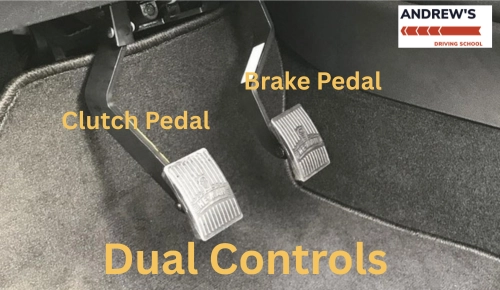
👣 Extra pedals, extra peace of mind.
Extra safety pedals so your instructor can help if you need it – you’re never on your own.
⏰ How Long is Your First Lesson? (The Time Flies!)
So, how much time do you get for this thrilling event?
A standard first driving lesson at Andrew’s Driving School typically runs for 1.5 to 2 hours. While that might sound like a long time to be focused, trust us—the time flies when you’re in the driver’s seat!
A longer session is essential because it gives us enough time to cover all the crucial groundwork without rushing:
- ✅ Master the Cockpit Drill (DSSSM)
- ✅ Get hands-on with the major vehicle controls.
- ✅ Thoroughly practice Moving Off and Stopping several times.
- ✅ Really start to build confidence behind the wheel.
By the end of your session, you’ll likely have covered basic steering techniques, effective mirror use, and maybe even a few simple turns. You’ll finish feeling accomplished, not rushed—the perfect start to your driving journey!
What to Bring to Your First Lesson
Here’s a quick checklist:
✅Provisional driving licence
✅Comfortable shoes (flat-soled, no heels or flip-flops)
✅ Glasses or contacts if you need them
✅ Water bottle (optional, but helpful on warm days)
✅ Your lesson confirmation (if booked online)
Haven’t got your provisional licence yet? Don’t worry — here’s how you can apply for it.
🔥 Drive Smart: Top Tips to Get the Most from Your Lesson
Your first driving lesson is an investment in your future. To get the most speed and efficiency out of your learning time, try adopting these professional habits right from day one!
By approaching your first driving lesson with a focused and positive attitude, you’ll feel confident, make great progress, and speed toward passing your test!
What Happens After the First Lesson?
After your first driving lesson, your instructor will talk through what went well and what needs more practice. This helps structure your learning plan for the coming weeks.
You’ll also start covering more complex topics like:
- Turning left and right at junctions
- Emerging into traffic
- Hill starts
- Basic reversing techniques
And before long, you’ll be driving with confidence on open roads.
🔑 6 Essential Tips for Choosing Your Driving Instructor
Before you book, make sure you choose a professional who sets you up for success. Use this checklist when researching your options:
If you are not in one of the areas that we cover you can easily find an approved driving instructor at https://www.gov.uk/find-driving-schools-and-lessons
How Will the 2026 Booking Changes Affect Your Driving Test?
Big Changes Coming to The Driving Test Booking System – What Learners Need to Know for 2026A fairer, safer way to book your test is on the horizon. Here’s how the new DVSA rules will put control back in your hands. .The Announcement: A Major Shake-Up for Learner...
When Can I Rebook My Driving Test After Failing?
When Can I Rebook My Driving Test After Failing? And the top 10 reasons for failing a driving testThe 10-Working Day Rule and Rebooking Times If you’ve just found out that you didn’t pass your practical driving test, it’s completely normal to feel disappointed — but...
What is a Smart Motorway
Learn what a smart motorway is, how it works, and the key rules every new driver should know — from red X signs to variable speed limits and safe breakdown tips.
What is learner insurance?
What is Learner Insurance ? How to insure your car as a learner and some money saving ideasGetting Ready to Hit the Road? Make Sure You’re Covered with Learner Driver Insurance Before you start practising outside of lessons, it’s essential to have the right learner...
Are Electric Cars Automatic or Manual?
Are electric cars Automatic or Manual?Electric cars differ from traditional cars but are electric cars automatic or manual? Driving an electric car is a different experience to driving either a petrol or diesel car. It is also different from what we know as automatic...
Should I Learn Automatic or Manual
Choosing to learn to drive automatic or manual, read about the advantages and disadvantages of both to help make an informed choice
Motorway Signs Driving Theory
Motorway signs explained in plain english, know the meanings of those signs with a blue
When to Use Fog lights
When to use fog lights and what The Highway Code and Law says about when to use fog lights As autumn and winter roll in, you might find yourself using your fog lights a bit more often than usual, so let's chat about what the law really says about them and figure out...
Driving Test Faults Explained Major, Minor What makes a fail.
Driving Test Faults Explained, what makes minor or major, and how many faults can you accrue on your driving test
What You Need To Know About Driving In Winter
Winter Driving advice , Demisting and driving in Snow, Rain, Ice, Wind or fog. Learn how best to deal with the worst winter driving conditions.
Summer driving tipsdrivi
Great tips and advice for summer driving, from staying hydrated to keeping your windscreen clear. Stay safe on the roads this summer with our top tips.
How to pass your driving test first time
If you have a driving test coming up read our top tips to help you pass the driving test first time. Also driving test marking sheet explained. What to expect on test day? What car will I use for my driving test? How many minors can i get on my test? Answers to all of these questions.
How Many Driving Lessons do I Need?
How many lessons do I need, find out the average amount of driving lessons needed to pass your driving test.
Learner Drivers on Motorway
Learner drivers are now allowed to have driving lessons on Motorways. This new ruling came into force on 4th June 2018.
Extended driving test
What you need to know if you need to take an extended driving test. If you have been ordered by a court to take an extended test we have information to help you to get your license back.
Find a good driving instructor
Find a good driving instructor
Learning to drive with parents
A few guidelines to help you with private driving practice.
Why You Need Breakdown Cover
Breakdown cover is essential if travelling far from home or on motorways, read our guide explaining different types of cover available.
Best cars for new drivers
What makes the best first car for new drivers? Read our guide to help find your first car.
Quick guide to new driving test
Changes to the driving test read here about what is changing.
Stopping Distances Easy Way to Remember Theory Test & Highway Code
Stopping distances as quoted in the Highway Code. Easy way to remember. Typical stopping distances and an easy to remember formula.
Tyre Tread Depth
How to check your cars tyres are safe and legal.
New Driver Insurance
New Driver insurance can be expensive, find out how to reduce the cost.

